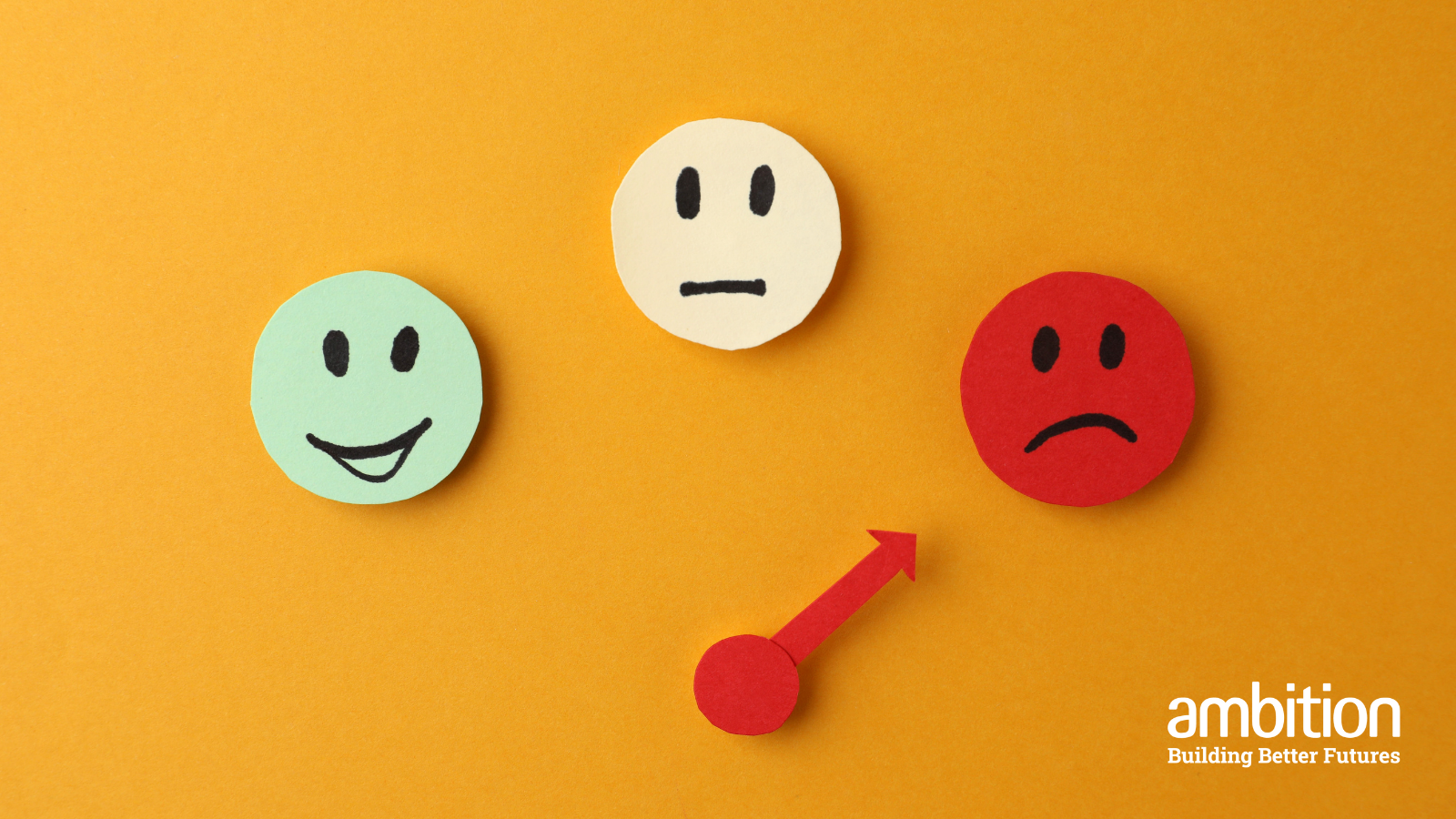Please beware of recruitment scams that are currently targeting jobseekers. Click here for further advice.

7 tips to help you manage stress and anxiety in recruitment now
When you think of recruitment, you might imagine long hours, heavy workloads, and stress. Well, that's the stereotype, isn't it?
But for some of us, that stereotype becomes our reality, and the stress can start taking a toll on our mental health. According to the General Social Survey by the Australian Bureau of Statistics, more than half of Australians (56%) experienced at least one personal stressor during 2019. This shows that there's a need for change.
Stress and anxiety are particularly prevalent in recruitment, more so than in many other sectors. While we do need our employers to take action, there are also steps we can take to manage our stress and anxiety, creating a positive workplace environment for ourselves.
The Impact of stress and anxiety in the workplace
Recruitment is a demanding career choice, but there's a fine line between stress motivating you and stress deteriorating your mental health. When stress or anxiety starts to affect your mental well-being, it's gone too far.
Stressed employees are not limited to the recruitment industry. Psychological distress increases absenteeism (unexpectedly absent) and presenteeism (present at work but not working) in the workplace (Holden et al. 2011). The 2020 Productivity Commission Inquiry on Mental Health estimated mental ill-health costs Australia from $13 billion to $17 billion per year. The typical compensation payment per claim for a mental condition was reported to be $25,650 (compared with $10,600 for all other claims) while the typical time off work was 16.2 weeks (compared with 5.7 weeks for all other claims) (Productivity Commission 2020).
Clearly, this is an issue that demands immediate attention. But how do we go about tackling stress and anxiety in the workplace, especially when everyone has different thresholds and external factors influencing their stress levels?
Employers need to be part of the solution, but employees also need to advocate for themselves and their needs. While it's easier said than done, creating supportive work environments where mental health is openly discussed allows employees to develop strategies that work for them in reducing their stress levels.
The personal impact
We understand that stress and anxiety have widespread effects on businesses and the Australian economy, but how do these issues affect individuals?
Stress and anxiety can manifest differently in each person, affecting mood, behaviour, and physical health. Common symptoms include:
Over or undereating
Irritable outbursts
Chest pain
High blood pressure
Restlessness
Lack of motivation
Exhaustion
Isolation from social events
Sleep disturbances
Headaches
Any one of these symptoms can have a negative impact on your life, but experiencing them over an extended period can lead to burnout, depression or anxiety and potentially the need for extended time off work for recovery.
Top strategies for managing stress and anxiety
Managing stress and anxiety, especially in recruitment, doesn't have a one-size-fits-all solution. Everyone is unique, and their needs differ. Often, stress management comes down to understanding what works for you. However, there are some foundational steps we can all take to safeguard our mental well-being.
Set clear boundaries and say no
What are your personal boundaries? In an industry where it feels like you always have to be available and say yes, it's essential to establish firm boundaries. In the post-pandemic world, people understand the need for downtime or personal responsibilities.
The key here is clarity and consistency. Need to leave early for family commitments? Make it known in your email signature. Don't take calls after a certain hour, let them go to voicemail with an updated message. Boundaries become ingrained in your work routine when you uphold them unapologetically.
Manage your time and plan ahead
Workload is a significant stress factor, and it can often feel overwhelming. Creating a daily or weekly plan that outlines priorities and deadlines can help you regain control. Whether you prefer a digital project management tool or a traditional to-do list, finding the right method to manage your workload will reduce stress and improve focus.
Prioritise self-care
In the hustle and bustle of work, we often neglect our basic needs. Remember to eat regular meals, stay hydrated, get some sunlight, and take short breaks. A lunch break, for instance, can be a valuable time to recharge and refocus for the afternoon.
Foster open communication
When was the last time you genuinely asked a coworker how they were doing and took the time to listen? The most effective way to manage stress and anxiety is by talking about it. Let others know how you feel and that you're open to conversations about mental health. Starting these conversations may be challenging, but it can make a world of difference.
What can employers do?
In a report by The State of Workplace Mental Health in Australia, it was revealed that 71% of organisational leaders believe leaders are committed to promoting the mental health of staff, but only 37% of employees believe that this is the case.
Let that sink in for a moment.
Employers can take several steps to support their employees' mental well-being. They should openly discuss mental health, stress, and anxiety and provide support without judgment. Creating a work culture that acknowledges stress and anxiety as part of being human, rather than weaknesses, is the most beneficial action employers can take.
In today's stressful world, we should challenge the idea that being stressed at work is a badge of honour. Both individuals and employers have a role to play in creating thriving workplaces where people can enjoy their work while respecting each other's boundaries. We're making progress, but there's still more work to be done in managing stress and anxiety.


%20(1)%20(1).jpg)

.png)


